A city without barriers. Discussion about inclusive environments at the forum “Culture. Look into the Future”
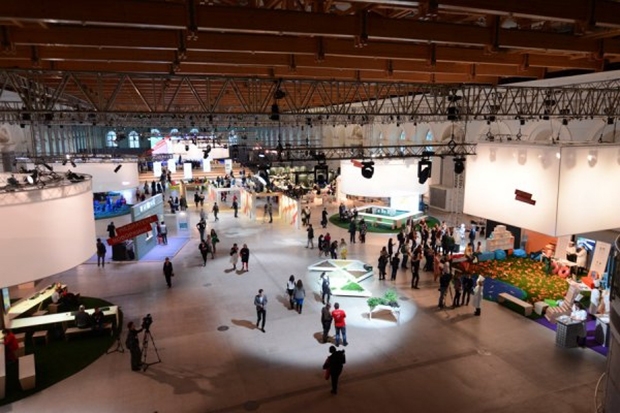
The Chief Architect of Moscow, Sergey Kuznetsov and the Deputy Chairman of the Committee for Architecture and Urban Planning, Tatyana Guk, talked about the creation of barrier-free environments in the capital.
Modern cities are fighting for human resources, and the humanization of the urban environment is becoming an important factor in discovering the creative potential of the modern individual. Today, many cities in the world are realizing that their main “users” are pedestrians, people of different ages and social groups. The accessibility of the city by all categories of people is now perhaps the main criterion for assessing the quality of its environment, as well as in terms of the comfortableness of the stay, the cost of real estate and, of course, attractiveness to tourists.
Moscow after others changes priorities, making people who go by foot the main actors of movement in the city, instead of those who travel by private car. The most humane response to this challenge becomes ensuring priority to the most vulnerable and least mobile people, not forgetting about the interests of others either. People are different, and it is important that everyone is well. It is important for the city to “communicate” with the people and that this “conversation” was intelligent and interesting. Herein lies the success of the economy of new times.
 Ramp at an entrance. (Bad example)
Ramp at an entrance. (Bad example)
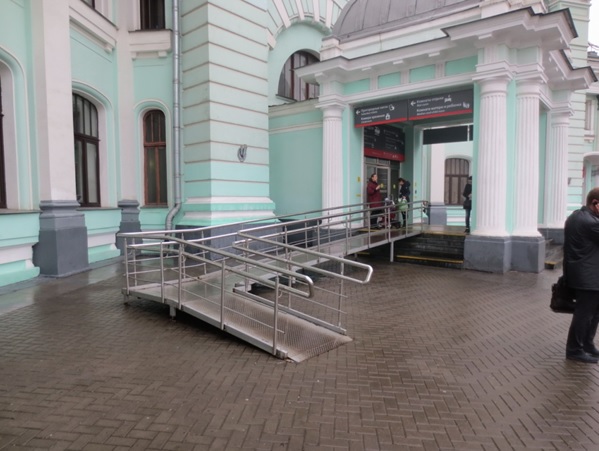 Ramp at an entrance. (Good example)
Ramp at an entrance. (Good example)
Moscow belongs to the European organization City for ALL, however, as of yet far from each site or facility in the capital may be called “barrier-free”. According to the Chief Architect of Moscow, Sergey Kuznetsov, on this issue the capital has significantly made headway compared to previous periods. “Today we have an understanding that the quality of the city and street environment directly depends on that all groups, users of the street, could comfortably be in this environment,” — said Kuznetsov. —The only question is how to achieve it, how to make sure that people do not feel limitations?“
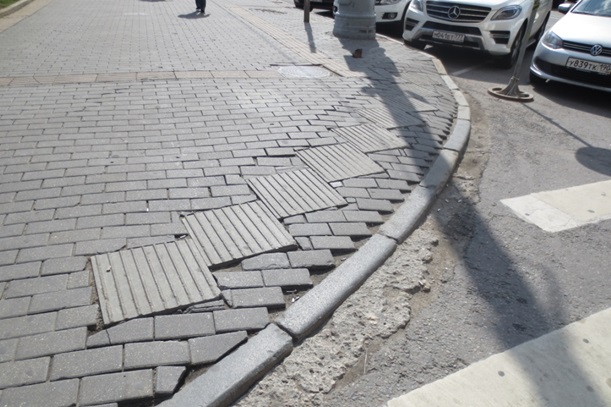 Set-up for lowering curbs on sidewalks in pedestrian crossing areas. (Bad example)
Set-up for lowering curbs on sidewalks in pedestrian crossing areas. (Bad example)
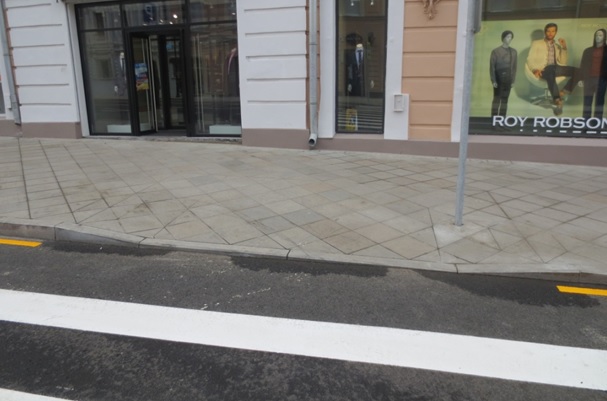 Set-up for lowering curbs on sidewalks in pedestrian crossing areas. (Good example)
Set-up for lowering curbs on sidewalks in pedestrian crossing areas. (Good example)
A comfortable and accessible environment starts with a house’s front doorstep, so it is important to consider not only isolated projects and local programs, but also to create a comfortable environment for residents in the context of all the city’s components — courtyard spaces, streets, metro entrances, bus stops, parks, etc. “If we talk about the direction in which it makes sense to go forward in building a barrier-free environment, then in architecture and landscaping we try to proceed by leveling surfaces,” said Sergey Kuznetsov. So, providing comfortable movement throughout the city to people in wheelchairs, mothers with children, the elderly or visually impaired residents, are ramps, lifting devices, descents from sidewalks in areas of ground pedestrian crossings, the so-called horizontal and vertical tactile information, in particular, tactile tiles on sidewalks.
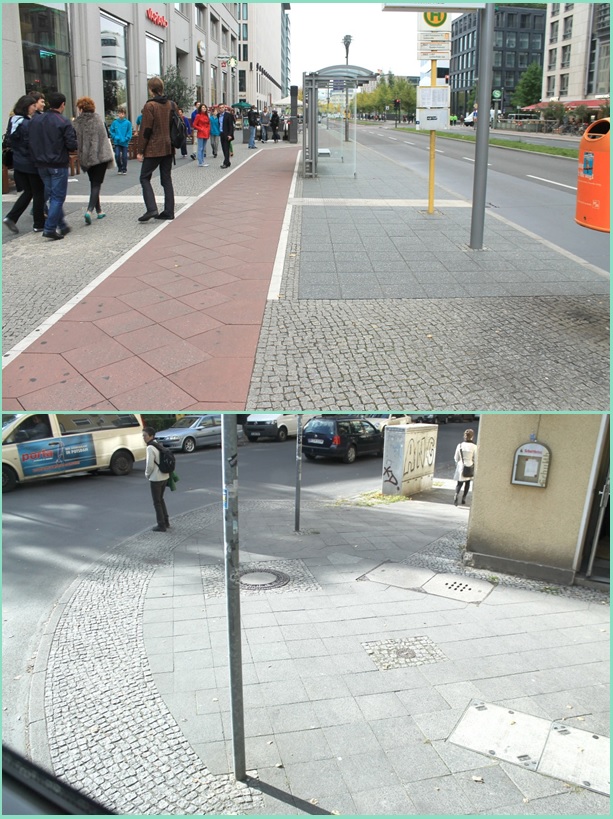 The principle of the visual environment’s aesthetics based on foreign experience
The principle of the visual environment’s aesthetics based on foreign experience
Sergey Kuznetsov noted that, for example, there was no zoning of sidewalks in Moscow for a long time, although the sidewalk, he said, it is not just the physical ability to go somewhere, but rather one of the most important elements of the urban environment where people spend a huge amount of time. “It’s part the city’s life, you can plan it how you plan, for example, an apartment,” remarked the Chief Architect. Deputy Chairman of the Committee for Architecture and Urban Planning Tatyana Guk clarified that now in the development of modern standards for sidewalks quite different requirements are imposed taking into account, for example, the experience of the NGO “World without Barriers” and in general the principles of reasonable adaption of the environment — the less obstacles when crossing different surfaces, the easier it is for people.
“The pavement zone should be differentiated. The area for pedestrians should have a minimum number of obstacles to movement — this is a basic planning principle,” said the Deputy Chairman of the Committee.
According to Sergey Kuznetsov, there are a number of documents of regulatory and legal frameworks for the organization of barrier-free environments that are currently in force in Moscow, so the formal aspect of the matter is quite thoroughly developed. Thus, means of access equipment for people of limited mobility are subject to almost all city facilities for all situations — from residential and administrative buildings to trade facilities and transport infrastructure.
 The principle of the visual environment’s aesthetics based on foreign experience
The principle of the visual environment’s aesthetics based on foreign experience
However, the abundance of requirements for the same ramp, for example, according to Kuznetsov, raises the question of the appropriateness and adequacy of funds that are spent on them. There is, among other things, also a problem of such equipment interfering in the appearance of historic buildings. Therefore, according to the Chief Architect, such structures should be seen as temporary measures, which in the future may be removed or replaced with something more fitting to the surroundings. In connection to this, it may be necessary to adjust the standards themselves, Kuznetsov added.
In the meantime, the professional community has also engaged in the search for ways of adapting old Moscow and historical monuments for people with limited mobility. Recently the results were summed up of the All-Russia competition of student works in the field of universal design and the creation of a barrier-free urban environment, which was conducted on the initiative of the All-Russian Society of Disabled People and the National Charity Fund “City Without Barriers”. In 2014, the museum complex of the First World War on the territory of the Tsarskoye Selo State Museum-Preserve was selected as the competition site. “The participants tried to find an elegant solution to a difficult problem. Many interesting works were presented with interesting approaches that can be used in complex and important sites. The best works we collected for analysis,” noted Sergey Kuznetsov.
- Tags:
- Urban Design




